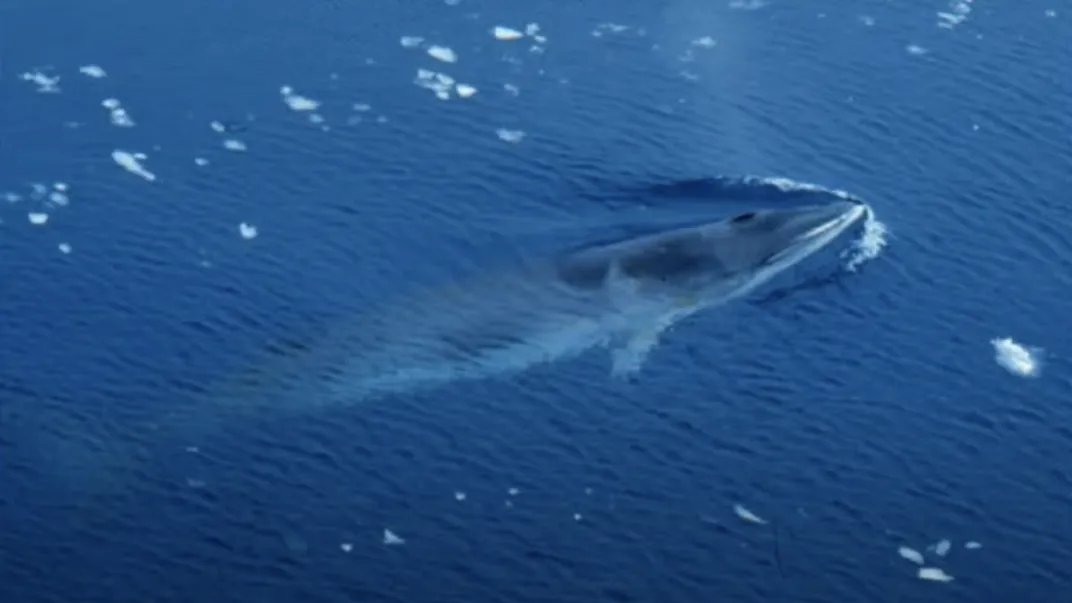Mysterious, Repetitive ‘Quacking’ Noise in the Southern Ocean May Have Been a Conversation Between Whales
During a 1982 experiment, researchers recorded the unusual sound, termed “bio-duck.” Now, a researcher suggests they may have been listening in on animals talking to each other
:focal(640x421:641x422)/https://tf-cmsv2-smithsonianmag-media.s3.amazonaws.com/filer_public/fb/56/fb56dee1-fd53-4c33-8045-a023c0280751/the-unsolved-mystery-s.jpg)
The ocean is full of many unknowns, including the mysterious sounds that often come from the deep. For instance, a mechanical-sounding noise near the Mariana trench and a “lonely” whale making calls at the unique frequency of 52 hertz have puzzled experts before. Now, an unidentified sound in the Southern Ocean that was first recorded in the 1960s might finally have an explanation—or, at least, a partial one.
First heard nearly six decades ago, the oddly mechanical sound has been named “bio-duck” due to its short, quack-like nature, and it was dubbed one of the largest unsolved mysteries of the Southern Ocean. The sound could still be heard in the following decades. In 1982, the noise was captured once more during a soundscape analysis of the South Fiji Basin.
In 1986, Ross Chapman, a researcher at the University of Victoria in Canada, became involved in examining the data from that experiment.
“We discovered that the data contained a gold mine of new information about many kinds of sound in the ocean, including sounds from marine mammals,” he says in a statement released during the 187th Meeting of the Acoustical Society of America, where he presented the research last week.
In 2014, scientists attributed the bio-duck sound to Antarctic minke whales. These creatures are known for producing “the most bizarre sounds,” as NOAA Fisheries marine biologist Sofie Van Parijs said at the time. A year earlier, researchers had placed acoustic recorder tags on two minke whales to document the noise. They found that it either came from the animal with the tag or another minke whale close by.
Although the whales were linked to the sound, the mystery continued. Scientists would need to get visual confirmation of the mammals producing the bio-duck noise to verify its source. “The sounds have never been conclusively identified,” according to the new statement.
Instead, Chapman’s analysis has brought to light that the sounds might actually be a conversation, not isolated noises.
“We found multiple speakers in different ocean locations, all making these sounds,” Chapman tells the Morning News’ Zai Apolonio.
Chapman helped analyze the data from the 1982 recording and found the sound was repeatable. At first, Chapman and his colleagues couldn’t believe it was biological. Back then, the study of ocean noises was in its “infancy,” he says in the statement, adding that they “learned something new about sound in the ocean every day as we looked further into the data.”
“It was really an exciting time for us,” Chapman says.
During the 1982 experiment, researchers recorded sound using a line array of hydrophones towed behind a ship for three weeks. They collected data nonstop, “listening to all the sounds in the ocean and all the time,” says Chapman to Cosmos’ Imma Perfetto. What made the effort special was that it used multiple hydrophones, working together as an acoustic antenna that allowed the researchers to determine where the sound was coming from.
The researchers identified at least four individual “speakers” producing the bio-duck sound in different locations across the ocean, Cosmos reports.
But what shocked Chapman was how similar to a conversation the noises seemed.
“The most amazing thing was that when one speaker was talking, the others were quiet, as though they were listening,” he says in the statement. “Then the first speaker would stop talking and listen to responses from others.”
Although this new result, alongside the 2014 study, adds to the body of research around the bio-duck noise, Chapman believes a larger mystery remains.
“The question is: When do they make the bio-duck sound, and why do they make it?” he tells Cosmos. “I wouldn’t say that the answer is really known, even today.”
/https://tf-cmsv2-smithsonianmag-media.s3.amazonaws.com/accounts/headshot/headshot_2_thumbnail.png)


/https://tf-cmsv2-smithsonianmag-media.s3.amazonaws.com/accounts/headshot/headshot_2_thumbnail.png)